Treblinka II
By the spring of 1942, SS had located a secluded site for the third and final camp to be set up to exterminate Jews in the General Government (operation Reinhardt). The site was about 100 kilometres northeast of Warsaw, and a few kilometers from Treblinka village. The camp was intended primarily to murder the Jews from Warsaw ghetto. The camp was set up about two kilometres from a labor camp called Treblinka, which has been in operation since June, 1941. The labor camp was later called Arbeitslager – Treblinka I and the extermination camp for just Treblinka II. Prisoners from Treblinka I were used as alve labor to build Treblinka II. Treblinka II measured about 600 by 400 metres and, like the other two camps (Belzec and Sobibor) in Operation Reinhardt, the Jews were murdered with carbon monoxide (engine exhaust) in three smaller gas chambers. The bodies were then buried in mass graves. Treblinka II was completed at the end of July, 1942, and its first commandant was SS-Obersturmführer Irmfried Eberl, a 32-year veteran from the discontinued T-4 program.
The Jews were transported to Treblinka in freight wagons, but during the first month of operation of the camp it was chaotic as transports arrived at a greater rate than the camp could cope with. Those responsible for the operation (Reinhardt), Odilo Globocnik and Christian Wirth, replaced Eberl with Hauptsturmführer, Franz Stangl, who had been commandant of the Sobibor extermination camp since May 1942. Stangl was also a veteran from the T-4 program. The main task of Stangl was to make Treblinka operational again and to ensure that the process of extermination proceeded without any mishaps. Stangl proved to be a good organiser and implemented the necessary changes, including replacing the original three gas chambers with ten larger gas chambers.
During Treblinka’s first month of operation, about 265,000 Jews from Warsaw ghetto was murdered. Between August and November of the same year, about 350,000 Jews were deported from Radom district. Between October, 1942, and February, 1943, approximately 110,000 Jews were deported from the district of Bialystok. At least 33,000 Jews were also deported to Treblinka from Lublin after Belzec had been discontinued. Jews were also deported to Treblinka from Bulgaria-occupied Greece and present Macedonia. About 8,000 Jews were deported from the Theresienstadt in Bohemia and a small number of Jews were deported to Treblinka from Germany, Austria, France and Slovakia via transit camps or ghettos in the General Government. In addition to Jews, a small number of Roma and Poles were also murdered in Treblinka.
In spring 1943, the Nazis began to open the mass graves and cremate the bodies, the number of transports also began to decrease, indicating that the camp was about to be dismantled. The prisoners chosen by the Nazis to work in the camp understood that they would be murdered when they were no longer needed as labor. Therefore, the prisoners began to organize and escape plans were made. Due to informers among prisoners it was difficult to plan and organize such a plan without being detected. Therefore, it was important that the escape was planned by as few as possible, but still give so many as possible the opportunity to escape. The prisoners had managed to get over a small number of weapons and the escape/uprising broke out on August 2. Unfortunately, the prisoners in Camp III (where the gas chambers and mass graves were located and separated from the rest of the camp) had not been informed about the forthcoming escape. Immediately the SS began a massive hunt for the escapeess. Many were captured in the next few days because it was difficult for them to stay hidden. But some succeeded by joining partisan units in the area.
Treblinka was seriously injured during the uprising because several buildings had been set on fire. There were no more gassings after the uprising and the last to be murdered in Treblinka was a group of Jewish girls shot in late November, 1943. Immediately after the uprising, Himmler ordered that Treblinka demolished because the majority of the Polish Jews were murdered anyway. Treblinka had fulfilled his task and was no longer needed. All buildings were demolished and the technical installation was dismantled and flowers (lupines) and trees were planted on the site. Treblinka had between July 1942, and November 1943, murdered between 700,000 and 800,000 Jews, most of them within a period of eight months. Between 30 – 40 people survived Treblinka. After the uprising, Stangl was transferred to the Adriatic coast and a anti-partisan unit. His deputy, Kurt Franz, became the new commandant with the task of dismantling and destroying the camp.
Current status: Demolished with museum (2015).
Location: 52° 37' 53" N, 22° 3' 8" E
Get there: Car.
Follow up in books: Arad, Yitzhak: Belzec, Sobibor, Treblinka – The Operation Reinhardt death camps (1987).
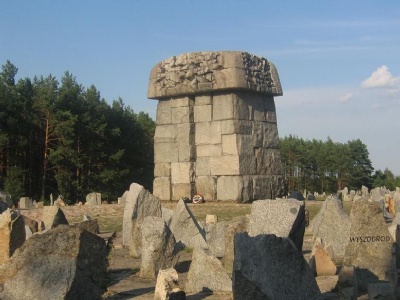

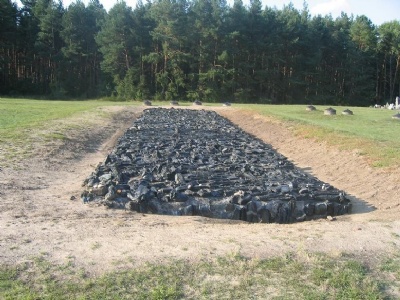
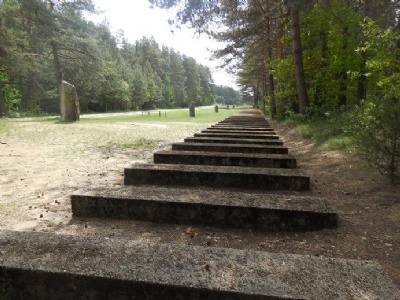
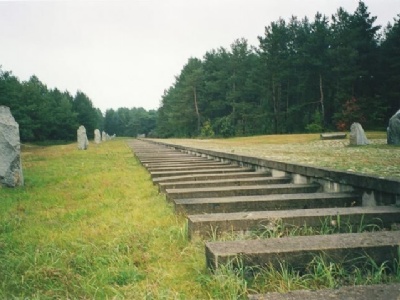
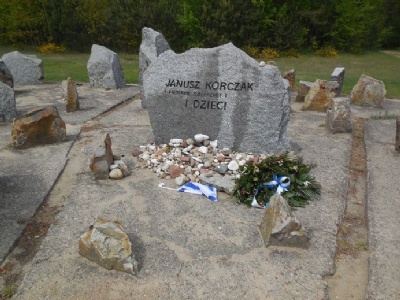
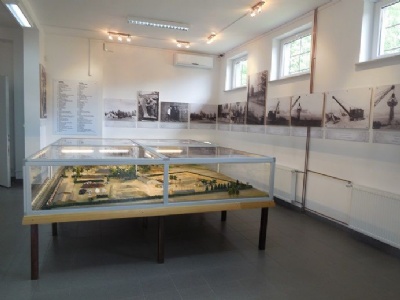
Although nothing remains of Treblinka, you can get a good idea how the camp looked like. There is a symbolic railway that leads up to ”platform” where the Jews were disembarked. In the place where the Jews were forced to undress, there is the main monument itself. The monument is surrounded by about 1700 smaller stones representing every Jewish congregation with victims in Treblinka. A little further beyond the great monument is another monument symbolizing ”the grill” where the corpses were cremated. To mark the camp area, there are stones erected at the former camp border. Treblinka is an incredibly atmospheric place with a good balance between the monuments that preserve the authentic feeling. At the museum there is a very detailed and interesting model of the camp.
After the war, Stangl fled via detours to Brazil, where he was captured by the Brazilian authorities in 1967 and extradited to West Germany for trial. During the second Treblinka trial in Dusseldorf in 1970, he was sentenced to life imprisonment. He died just a few months later of a heart attack. Stangl was the only commandant of Operation Reinhardt to be brought to justice while others were either killed or committed suicide. Shortly before his death, Stangl told author Gitta Sereny about his experiences. He never felt any guilt, claiming that his conscience was clean because he had only followe order as an soldier. The first Treblinka trial took place between October 1964 and August 1965 when ten former officers serving in Treblinka were brought to justice in Düsseldorf. Among them Stangl’s deputy and Treblinka’s last commandant Kurt Franz. He was sentenced to life in prison but was released in 1993 for health reasons and died in 1998.